
‘Impeccably researched and superbly written’ Observer
‘[A] captivating and dramatic account . . . Drawn from letters and diaries, Holland’s immersive narrative is told through the eye-level perspectives of dozens of subjects. Readers will be enthralled’ Publishers Weekly
‘Holland has something new to say . . . Filled with insight and detail’ Neil Oliver
‘Tells the story of the hard, bloody, muddy fighting that filled the rest of 1943 . . . this excellent book reinforces Holland’s reputation as the busiest and most popular military historian of the Second World War working today’ Spectator
‘James Holland is the best of the new generation of WW2 historians’
Sebastian Faulks
‘A remarkable achievement by a historian at the height of his powers. Holland has successfully illustrated both the significance and the savagery of the Italian campaign . . . through a powerful and compelling narrative’
Military History Matters
‘[A]n excellent account of the opening campaign on mainland Italy . . . It captures the difficulties at every level, from terrain to logistics, and resistance to resources, and also brings out the strategic intentions and consequences of the campaign. A great read’
History Extra
ABOUT THE AUTHOR
James Holland is an internationally acclaimed and award-winning historian, writer and broadcaster. The author of a number of bestselling histories, including, most recently, Brothers In Arms and Normandy ’44, he has also written nine works of fiction and a dozen Ladybird Experts.
He is the co-founder of the annual Chalke Valley History Festival, which is now in its twelfth year, and he has presented – and written – many television programmes and series for the BBC, Channel 4, National Geographic and the History and Discovery channels.
With Al Murray, he has a successful Second World War podcast, We Have Ways of Making You Talk, which also has its own festival, and he is a research fellow at St Andrew’s University and a Fellow of the Royal Historical Society. He can be found on Twitter as @James1940 and on Instagram as @jamesholland1940.
Also by James Holland
Non-fiction
FORTRESS MALTA
TOGETHER WE STAND HEROES
ITALY’S SORROW
THE BATTLE OF BRITAIN
DAM BUSTERS
AN ENGLISHMAN AT WAR
BURMA ’44
BIG WEEK
RAF 100: THE OFFICIAL STORY
NORMANDY ’44 SICILY ’43
BROTHERS IN ARMS
THE SECOND WORLD WAR: AN ILLUSTRATED HISTORY
THE WAR IN THE WEST Volume I: Germany Ascendant 1939–1941
THE WAR IN THE WEST Volume II: The Allies Fight Back 1941–1943
Ladybird Experts
THE BATTLE OF BRITAIN
BLITZKRIEG
THE BATTLE OF THE ATLANTIC
THE DESERT WAR
THE EASTERN FRONT 1941–43
THE PACIFIC WAR 1941–1943
THE BOMBER WAR
THE WAR IN ITALY
THE BATTLE FOR NORMANDY 1944
THE WAR IN BURMA 1943–1944
VICTORY IN EUROPE 1944–1945
VICTORY AGAINST JAPAN 1944–1945
Fiction
THE BURNING BLUE
A PAIR OF SILVER WINGS
THE ODIN MISSION
DARKEST HOUR
BLOOD OF HONOUR
HELLFIRE
DEVIL’S PACT
DUTY CALLS: DUNKIRK
DUTY CALLS: BATTLE OF BRITAIN
For more information on James Holland and his books, see his website at www.griffonmerlin.com
THE SAVAGE STORM
The Battle for Italy 1943
PENGUIN
S
James Holland
BOOK
TRANSWORLD PUBLISHERS
Penguin Random House, One Embassy Gardens, 8 Viaduct Gardens, London SW11 7BW www.penguin.co.uk
Transworld is part of the Penguin Random House group of companies whose addresses can be found at global.penguinrandomhouse.com
First published in Great Britain in 2023 by Bantam an imprint of Transworld Publishers Penguin paperback edition published 2024
Copyright © Griffon Merlin Ltd 2023
Maps drawn by Lovell Johns Ltd
James Holland has asserted his right under the Copyright, Designs and Patents Act 1988 to be identified as the author of this work.
Every effort has been made to obtain the necessary permissions with reference to copyright material, both illustrative and quoted. We apologize for any omissions in this respect and will be pleased to make the appropriate acknowledgements in any future edition.
A CIP catalogue record for this book is available from the British Library.
ISBN
9781804991404
Typeset in 10.5/12.75pt Minion Pro by Jouve (UK), Milton Keynes. Printed and bound in Great Britain by Clays Ltd, Elcograf S.p.A.
The authorized representative in the EEA is Penguin Random House Ireland, Morrison Chambers, 32 Nassau Street, Dublin D02 YH68.
Penguin Random House is committed to a sustainable future for our business, our readers and our planet. This book is made from Forest Stewardship Council® certified paper.
1
For David Walsh
Contents List of Maps xi Principal Personalities xliii Note on the Text li Glossary liii Prologue 1 Part I: Summer 1 The Burning Blue 11 2 Conundrums 29 3 At General Clark’s HQ 55 4 BAYTOWN 67 5 Uncertainty 85 6 Mistrust 102 7 Bluffing 116 Part II: Autumn 8 AVALANCHE 131 9 Toehold 150 10 Italy’s Collapse 169 11 Build-up and Containment 189 12 Fritz X 210 13 Crisis 225 14 Turn of Fortune 236 15 Breakout 252 16 Naples 272
x Contents 17 Termoli 286 18 Desolation 304 19 The Volturno 314 Part III: Winter 20 Despair 337 21 Questions of Morale 353 22 A World Turned Upside Down 363 23 Continuous Pressure 375 24 The Winter Line 386 25 Slow Death 403 26 The Sangro 418 27 The Good Cause 434 28 RAINCOAT 450 29 Valley of Death 468 30 The Tyranny of OVERLORD 481 31 Death of a Village 502 32 Try and Try Again 520 33 Merry Christmas and a Happy New Year 535 Postscript 551 Appendix I: Timeline of Events 561 Appendix II: Order of Battle: Allied and German Armies at the Beginning of December 1943 581 Notes 587 Selected Sources 611 Acknowledgements 637 Picture Acknowledgements 643 Index 653
List of Maps
Italy Terrain Map xiii
Eighth Army’s Invasion of Southern Italy xiv–xv
Operation AVALANCHE xvi–xvii
German Counter-attack at Salerno xviii–xix
Advance to Foggia and Naples xx–xxi
Termoli xxii
Progress of the Hasty Ps and the Faughs xxiv–xxv
Fifth Army’s Advance to the Volturno xxx–xxxi
The Volturno xxxii–xxxiii
Fifth Army’s Advance to the Bernhard Line xxxiv–xxxv
Eighth Army’s Advance to the Sangro xxxvi–xxxvii
Fifth Army’s Assault of the Bernhard Line xxxviii–xxxix
Ortona Battleground xl–xli
Map Key
Allied units

Axis units

Standard Military Symbols
I = Company
II = Battalion
III = Regiment
Armd = Armoured
Bde = Brigade
Bn = Battalion
Br. = British
Can. = Canadian
Div. = Division
Ger. = German
X = Brigade
XX = Division
XXX = Corps
XXXX = Army
XXXXX = Army Group
Other Abbreviations
PIR = Parachute Infantry Regiment
PPCLI = Princess Patricia’s
Canadian Light Infantry
RCT = Regimental Combat Team
SRS = Special Raiding Squadron
HG = Hermann Göring
Inf. = Infantry
NZ = New Zealand
PG = Panzergrenadier
Pi.
Bn = Pionier-Bataillon
SSF = Special Service Force
US = United States
WNSR = West Nova Scotia Regiment








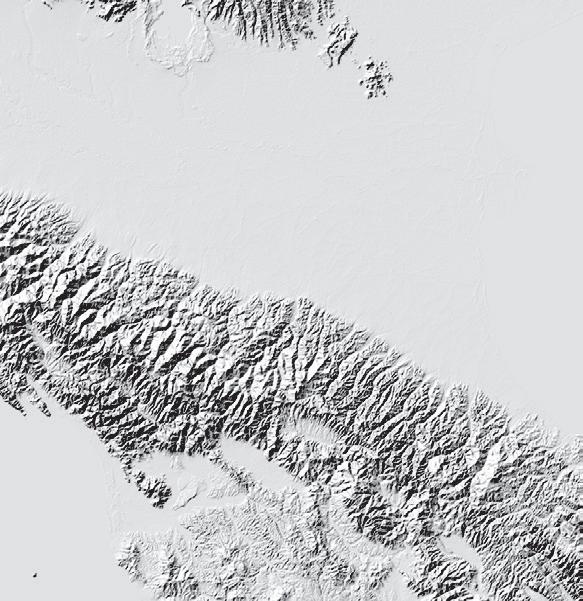








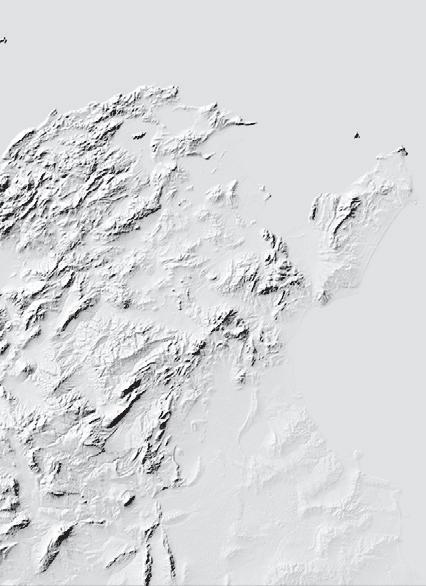



























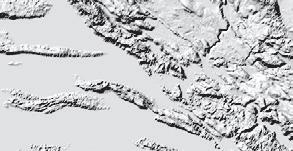








I TA LY TE RR AIN M A P



Brindisi

Lecce



Grottaglie



Bari

Castellaneta
Taranto
Br. 1 AB Div.

Gulf of Taranto












Spezzano










EIGHTH ARMY’S INVASION OF SOUTHERN ITALY











Agropoli









































































1
Br. 231 Bde Can. 3 Bde Br. 13 Bde Br. 17 Bde Bde N 0 0 40 km 40 miles KEY Main line of advance 5 Division Main line of advance 1 Canadian Division
Messina Reggio Bagnara Scilla Cosenza Pizzo Catanzaro Crotone Catanzaro Marina San Giovanni Aspromonte Straits of Messina Br.
SRS














































Br. 46 Div. Red White Commandos Br. 56 Div. XX XX III II III XX XX II US 143 RCT II US 3 Ranger 1 US 1 Ranger X 139 X 138 46 US Ranger Ger. HG Div. 11 Sept. 11 Sept. Ger. 15 PG Castellammare di Stabia Maiori Salerno Vietri sul Mare Mt di Chiunzi N 0 0 5 km 5 miles KEY The Beachead, 9 Sept. Allied advance, 1600 13 Sept. Enemy position













































White Green Red Blue Yellow Green 36 XX Floating Reserve X 128 X XX 169 X 201 X 167 II 36 10Br XXXVI(9Sept.) XX45 46XX56 45XX36 III 142 III 143 III 141 II 141 2 II 141 1 II 142 3 II 143 3 II 143 2 II 142 1 II 141(-) 3 XX 145(-) III 179 III 157(-) Sept. eve, 9 Sept. 12 Sept. Ger. 16 PG Ger. 29 PG 10 Br XXX VI (as of 12 Sept.) Eboli Battipaglia Persano Roccadaspide Albanella Altavilla Serre Crotone Capaccio Paestum Agropoli Ponte Sele Montecorvino Mt Soltano Mt Soprano R. Calore R.Sele E 169 X 201 II 2 142 II III 12 Sept. Ger. 29 PG OPERATION AVALANCHE

Mt di
Chiunzi


Naples Avellino Salerno Baronissi Nocera

Sorrento
Moldenhauer Becker Br. 138 Bde Haas Ger. SS US Ranger Force Stroh Br. 128 Bde Br.56Div. Br.46Div. Br. 139Bde Baronissi 138 Bde

Maiori








KEY








Pezzano
Filetto

Mt Giovi
Pontecagnano



















































Furthest point reached by enemy battle groups







Forward positions of U S X Corps and approximate line taken up by American units by noon 14th
Army HQ















Div. HQ

Corps HQ








Bde HQ





























0 0 5 km 5 miles N
US 39
R. Picentino


Montella
Br. 2/7 Queen’s
Faiano
Br. 169Bde
Br. 201
Guards Bde Div.
R.Tusciano

Br.XCorps USVICorps
Br. 1 9Bd S 45 iv.




Br. 2/6 Queen’s


GERMAN COUNTER-ATTACK AT SALERNO


Montecorvino

Ger. 64 PG –Stempel
Battipaglia Castelluccia
Br. 167 Bde US 3/141 RCT US 157 RCT



Eboli
Ponte Sele factory
Ger. 79 PG –von Doering
US 179 RCT 5

Ger. 76 PG


US 16. Pi. Bn –Klein Limburg Ger. 16 PG
R.Sele
Se PG
.
Ger. 71 PG –Krüger
R. Calore
Persano
US 143 RCT (less 1 Bn)
Albanella Stn
Altavilla
US36Div. US45Div. Ger. 15 PG –Ulich
Sele

US 1 and 2 Bns
US 504 PIR
Serre Crotone Capaccio

Mt Chirico
Albanella

Ger. 29 PG

English units
Mt Soprano

Agropoli

Roccadaspide


Mt Faito








Capodichino
Caserta Nola
Naples
Capua Tri isco Nocera






Lucera





Sorrento Torre del Greco
Pompei


Paestum Montecorvino Avellino
Salerno Vietri

Eboli


Capaccio



Atena
Roccadaspide







Benevento Foggia
R. Calore
Vesuvius 27th 18th Br. 5 Div. 19th–21st US VI Corps US 45 Div. Br. X Corps US Ranger Force Br. 56 Div. Br. 46 Div. 30th 28th–29th 30th 1st 1st 26th 22nd 30th
V Corps
isco Nocera Torre Baronissi . l
l n C lo e 30th
Battipaglia Baronissi Foggia Main TuscianoR.Sele R.Volturno
Mt
Br.
Eboli
R.V


































ADVANCE TO FOGGIA AND NAPLES

































Manfredonia Canosa Potenza Altamura Monopoli Taranto Can. 1 Div. Br. 1 AB Div. Br.Eighth Army 22nd Br. 78 Div. 22nd Br. 78 Div. 24th 24th 25th 18th Br. XIII Corps 20th Canosa Monopoli
N 0 0 20 km 20 miles

TERMOLI



Landings SRS & 40 Commando 2.15 a.m. 3 Oct.
Termoli
Fallschirmjäger

San Giacomo


R. Biferno
Bridge destroyed new bridge opened early 5 Oct.

Guglionesi

British positions evening of 3 Oct.

Br. 78 Div.
Portocannone

 26. Panzer-Division
26. Panzer-Division

A 56th Division
Bren gunner, spare barrel on the wall to his left, and his sergeant, beside him with binoculars, keep an eye on the enemy from the old castello of Calvi Vecchia. The date is 24 October 1943.












F aughs P RO G R E SS O F T H E H A S TY P S AN D T HE FA U G H S






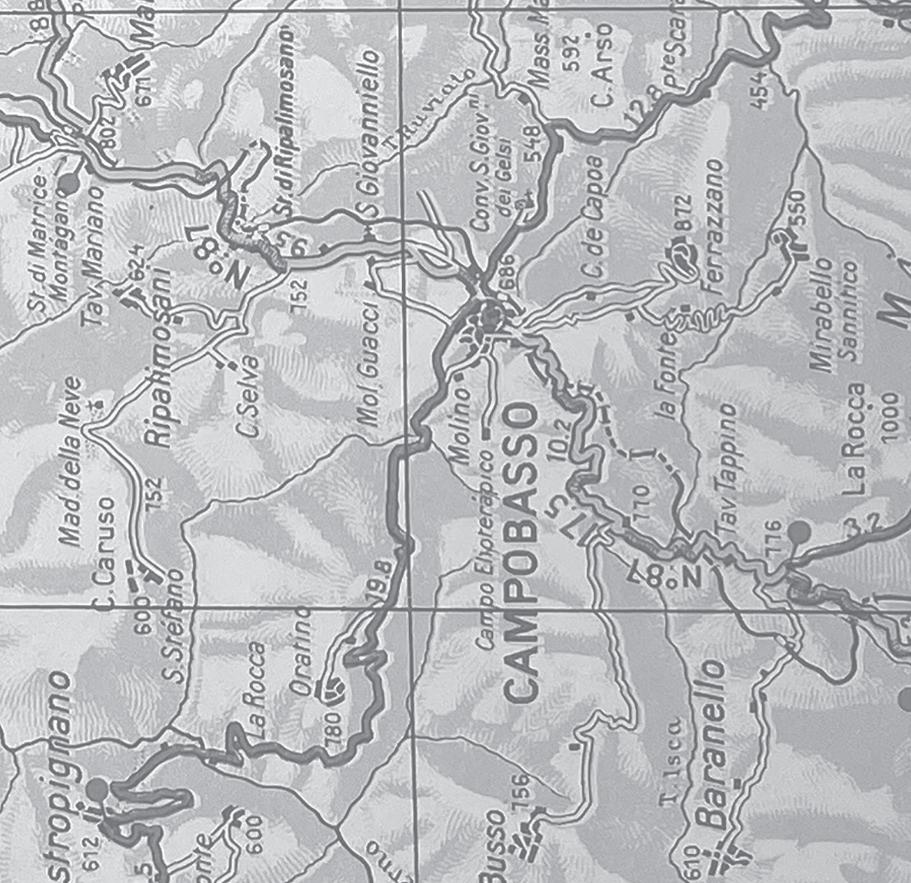





Hasty P s

 Paestum
Paestum
Rocholl’s OP
Salerno
Salerno
46 Div.
Altavilla
Torre di Paestum
Ancient Paestum
Green Beach
Yellow Beach
Monte Soprano

 Volturno
Upper Volturno
R. Volturno
Monte Sammucro Venafro
Monte Corno Monte Crace
Monte Monticello
R. Volturno
Triflisco Gap
Audie Murphy’s Cave
Monte Castellano
Volturno
Upper Volturno
R. Volturno
Monte Sammucro Venafro
Monte Corno Monte Crace
Monte Monticello
R. Volturno
Triflisco Gap
Audie Murphy’s Cave
Monte Castellano

 Monte Corno
Monte Camino
Rangers
Venafro
Germans
Bare Arse Ridge
Monte Camino
Monte Corno
Monte la Difensa
Monte Sammucro
Monte Corno
Monte Camino
Rangers
Venafro
Germans
Bare Arse Ridge
Monte Camino
Monte Corno
Monte la Difensa
Monte Sammucro
Monte Sammucro

Monte Rotondo
Monte la Difensa
Point197
Via Casilina
Monte Camino Monte Lungo
The Mignano Gap

Monte Trocchio
Liri Valley
Cervaro
Monte Trocchio and the Monte Cassino Massif
Abbey of Monte Cassino
Cassino town


























Pompei Torre Annunziata Castellammare di Stabia Naples Aversa Caserta Cancello Maddaloni Capua Sorrento Mt Vesuvius Ischia Capri R.Volturno US 3 Div. XX Br. 23 Armd Bde X Br. 7 Div. XX US Ranger Force II US Ranger Force II US 82 AB XX US 82 AB XX Br. 56 Div. XX Pompei Aversa R V lturno 23 US N 0 0 10 km 10 miles


















FIFTH ARMY’S ADVANCE TO THE VOLTURNO





KEY



Allied routes of advance

German front line, 20 Sept.

German front line, 6 Oct.













Acerno Montecorvino Maiori Amal Avellino Oliveto Eboli Battipaglia Vietri sul Mare Benevento Salerno Nocera Sarno R. Calore Salerno beachhead US 3 Div. US 45 Div. XX Br. 7 Div. XX US 45 Div. XX US 133 Inf. III Br. 46 Div. XX Br. 56 Div. XX XX Montecorvino Ca re 7 45 Div. XX 56 XX XX




























R.Vo u n
Cancello

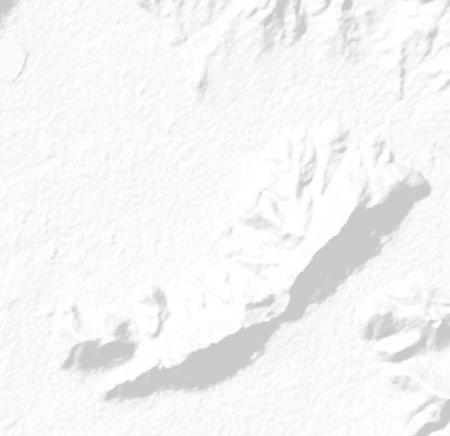



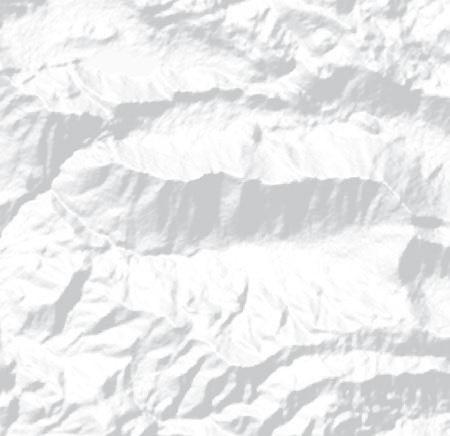
















Caserta
Capua Tri isco Alife
Grazzanise Sparanise Teano Pietravairano
Mt
56 Div. XX XX
46 Div. Br. 7 Armd Div. XX XX XXX Ger. 15 PG Ger. HG Div. US 7 Inf. II
R.Volturno Mt Monticello
Caruso Mt Castellone Br.
Br.
KEY
location, 12 Oct. Allied attacks, 12-14 Oct.
Unit
THE VOLTURNO



























Maddaloni Faicchio Telese Caiazzo R. Calore Mt Acero Mt Castellone XXX US 30 Inf. XXX XX XX XXXX 3 34 34 45 Br.ArmyEighth USFifth Army III US 168 Inf. Ger. 3 PG XX Ger. 26 PG III US 15 Inf. III US 135 Inf. III US 157 Inf. III US 180 Inf. 2 II US 180 Inf. 1 II US 180 Inf. 3 II US 179 Inf. 2 II US 179 Inf. 1 II US 179 Inf. 3 II Br.X Corps R C l r 26 PG III US 135 Inf. 157 180 N 0 0 5 km 5 miles





Sant’Elia
Aquino Cassino

Pontecorvo


Minturno


R . Garigliano

Ceppagna
San Pietro In ne
Castel di Sangro


Roccamon na

Mt Massico Mt Cesima Mainarde Mtns




R. Volturno



Mt Camino Mt Maggiore
Mt Croce Mt Mattone




Castel Volturno
Cancello

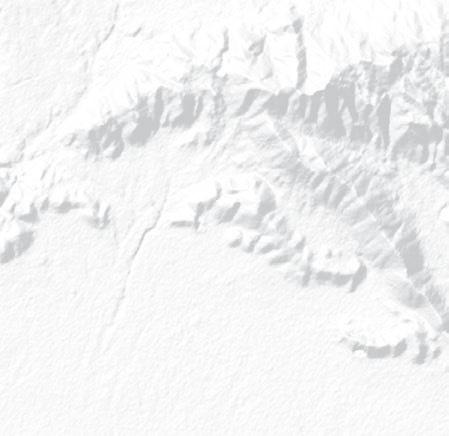


Capua Tri
Grazzanise
Arnone




Castelforte Mignano Teano Atina Isernia
R. Liri R . G a r i R.Rapido
R . Savone
3rd 23rd
2nd 13th 24th 16th 17th
13th 12th US 3 Div. 25th Br. 7 Armd Div.
7 Armd Div. Br. 56 Div. US
Br. 46 Div.
Mt Cairo Mt La Rocca Mt Fuga Mt Corno Venafro Mt Sambucaro MignanoGap US 34 Div.
25th
Br. Eighth Army
Br.
45 Div.
PIR Br. XCorps
t n S
no a 45
46 Div.
Castel Sangro San Pietro In ne lia o iri Rapi o
Mi
Div.

































Limatola Piana di Caiazzo Caiazzo Capua Tri isco Caserta Faicchio Benevento Alife Naples R. Calore R . Titern o Mt Acero Maggiore US 34 Div. Div. 13th 14th 19th 13th US 3 Div. Div. US 45 Div. PIR US VI Corps Caiazzo Naples a ore Tit n FIFTH ARMY’S ADVANCE TO THE BERNHARD LINE N 0 0 10 km 10 miles


Ortona




Maiella Mtns


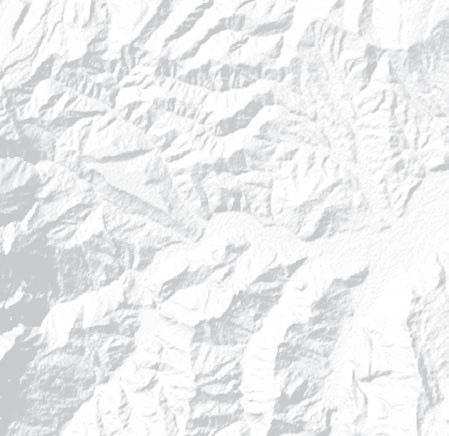
Mozzagrogna Paglieta
R.Sangro
Torricella
Atessa

Gamberale


Palmoli

Vasto San Salvo Scerni
3rd & 4th Nov.

Mt Farano R. Trigno

Castel di Sangro


Castiglione

8th Nov. Br. V Corps
Petacciato Montefalcone

Isernia

Venafro
V

4th Nov.
R.Biferno R
Molise Forli



R. Sinarca Br. XIII Corps 14th Oct. Br. 5 Div.
Molise Mtns
Boiano
Matese Mtns
8th Oct. Ind. 8 Div. 5th Nov. 2nd–5th Nov. 3rd 4th Nov.


Campobasso
15th



27th Brick factory Vasto Paglieta .


8th Br. 78 Div.


.
olturno
t rno
Biferno


























































Foggia Lucera Troia San Severo
Guglionesi Foiano D a u n i a M t n s R.Fortore a 8th Oct. Can. 1 Div. Can. 1 Bde Can. 3 Bde Br. 78 Div. Br. 11 Bde Oct. 3rd Oct. Br. Special Service Bde Br. 36 Bde Br. 38 Bde Can. 2 Bde Bailey bridge Brick factory
Termoli
N 0 0 15 km 15 miles
EIGHTH ARMY’S ADVANCE TO THE SANGRO































Atina Belmonte Belvedere San Biagio Vallerotonda Acquafondata Cerreto Cervaro San Vittore San Rocca
Rocca d’Evandro Stn Pignataro
Sant’Elia Terelle Piedimonte Cassino Mt Cairo Mt Cifalco Mt Bianco Mt Croce Mt Passero Molino Monna Acquafondata Sammucro Mt Majo Mt Lungo Mt Maggiore Mt Camino Mt La Difensa Mt Porchia Mt Trocchio Rotondo Mt Faullo Mt Ferro Mt Rotolo Mt Carella Mt Castellone R. Peccia R. Gar i R. Liri R . R a p ido R . Secco R . Garig l i ona 13th 16th US/Can I SSF Force US 34 Div. 8 Jan. US 34 Div. 16th 7th 7 Jan. 8 Dec. 15th 12th Gustav Line Br. 1 Armd Div. G e r . KOA 1 0 Abbey Acquafondata d’Evandro Piedimonte Croce Mt Majo Maggiore Mt Faullo Rotolo Pec i i o c G o 7
d’Evandro
Sant’Apollinare
































Cardito Filignano Colli a Volturno Alfedena Isernia Pozzilli Venafro San Pietro In ne Mignano Passero Mt Pantano Mt Molino Mt La Rocca Acquafondata Mt Corno Mt Sammucro Lungo Difensa Mt Rotondo R. Volturno US/Can I SSF Force to 6 Dec. US 45 Div. US 34 Div. from 10th Dec Mor. 2 Div. US 34 Div. Alg.3Div. 15 Dec. 27 Dec. 12th to 4th Dec 7 Dec. US 36 Div. Isernia Mt Sammucro t r FIFTH ARMY’S ASSAULT OF THE BERNHARD LINE N 0 0 5 km 5 miles
Principal Personalities
American
Sergeant Isaac Akinaka A Company, 100th ‘Nisei’ Battalion, 133rd Infantry Regiment, 34th Division
General Mark Clark Commander, US Fifth Army
Colonel William O. Darby Commander, Army Ranger Force
Lieutenant Charles Dills Fighter pilot with 522nd Squadron, 27th Fighter-Bomber Group
Captain Roswell K. Doughty Intelligence officer, S-2, and commanding officer of Intelligence and Reconnaissance Platoon, 141st Infantry Regiment, 36th ‘Texas’ Division
Lieutenant-General John Lucas Commander, VI Corps, Fifth Army
Corporal Audie Murphy
B Company, 1st Battalion, 15th Infantry Regiment, 3rd Infantry Division
Private Frank Pearce C Company, 111th Engineer Battalion, attached to 143rd Infantry Regiment, 36th Infantry Division
Ernie Pyle Reporter for Scripps-Howard Newspapers
Lieutenant James E. Reed 59th Fighter Squadron, 33rd Fighter Group
Quent Reynolds Reporter for Colllier’s Weekly
General Carl ‘Tooey’ Spaatz Commander, Mediterranean Strategic Air Forces, later commander, US Fifteenth Air Force
Lieutenant T. Michael Sullivan
Bombardier, 429th Bomb Squadron, 2nd Bomb Group, Fifteenth Air Force
xliv Principal Personalities
Lieutenant Robert A. ‘Smoky’ Vrilakas
P-38 Lightning pilot, 94th Fighter Squadron, 1st Fighter Group
Corporal Bud Wagner
2nd Battalion, 151st Field Artillery, 34th Infantry Division
Australian
Major Lawrence
Franklyn-Vaile
Royal Irish Fusiliers, 38th Irish Brigade, 78th Division
General Sir Harold Alexander Commander, 15th Army Group
Lieutenant Peter Bull, RNVR Commander, HM Landing Craft Flak 16
Lieutenant Christopher Bulteel No. 3 Company, 3rd Coldstream Guards, 201st Guards Brigade, 56th Division
Lieutenant David Cole
Battalion Signals Officer, 2nd Royal Inniskilling Fusiliers, 13th Infantry Brigade, 5th Division
Lieutenant Peter Davis Special Raiding Squadron
Alan Moorehead
War correspondent for the Daily Express
British
Wing Commander Hugh ‘Cocky’ Dundas
Deputy commander, 324 Wing
Sergeant Norman Lewis
British intelligence officer with 312th Field Security Service
Harold Macmillan
Minister of State
Lieutenant Peter Moore
Platoon commander with 2/5th Battalion, Leicestershire Regiment, 139th Infantry Brigade, 46th Division
Captain Bertie Packer, RN Commander, HMS Warspite, Force H, Mediterranean Fleet
Sergeant-Major Jack Ward
RSM 56th Heavy Regiment, Royal Artillery, X Corps
Major Alex Campbell
Commander, A Company, Hastings and Prince Edward Regiment, 1st Infantry Brigade
Major the Reverend Roy Durnford
Padre, Seaforth Highlanders of Canada, 1st Canadian Division
Corporal Harry Wilson
Cipher clerk with 8th Indian Division HQ and later 17th
Indian Brigade
Canadian
Captain Farley Mowat
Intelligence officer, Hastings and Prince Edward Regiment, 1st Infantry Brigade
Obergefreiter Siegfried Bähr
5. Kompanie, 2. Bataillon, 3. Fallschirmjäger-Regiment, 1. Fallschirmjäger-Division
Generalleutnant Hermann Balck
Acting commander, XIV Panzerkorps
Oberleutnant Hans Golda
Commander, 8. Batterie, Werfer-Regiment 71
Feldwebel Robert Gugelberger Fighter pilot, 4. 2/ Jagdgeschwader 53
German
Feldmarschall Albert
Kesselring
German Oberbefehlshaber Süd
Unteroffizier Jupp Klein
2. Kompanie, FallschirmPionier-Bataillon 1, 1. Fallschirmjäger-Division
Oberstarzt Wilhelm Mauss
Senior Medical Officer, XIV
Panzerkorps headquarters
Gefreiter Werner Mork
12. Kompanie, 2. Bataillon, 200. Panzergrenadier-Regiment, 90. Panzergrenadier-Division
xlv
Principal Personalities
xlvi Principal Personalities
Leutnant Martin Pöppel
1. Kompanie, MaschinengewehrBataillon, 1.
Fallschirmjäger-Division
Oberst Wilhelm Schmalz
Commander, Brigade Schmalz, Panzerdivision-Hermann Göring
Generalleutnant Fridolin von Senger und Etterlin
Commander, XIV Panzerkorps
Feldwebel Gerhard Waag
Fighter pilot with 6. 2/ Jagdgeschwader 53
Major Georg Zellner
Commander, 3. Bataillon, 44. Reichsgrenadier-Regiment, 44. ‘Hoch- und Deutschmeister’-Division
Carla Capponi
Member of Rome-based partisan movement Gruppi di Azione Patriottica
Count Filippo Caracciolo
Member of the Partito d’Azione based in Naples
Generale Giacomo Carboni
Head of SIM and commander of Corpo d’Armata Motocorazzato
Pasqualina Caruso
Civilian living in Naples
Tenente Eugenio Corti
2a Batteria, 61 Raggruppamento di Artiglieria, Corpo d’Armata
Dom Eusebio Grossetti
Benedictine monk at the Abbey of Monte Cassino
Pierinio Di Mascio
Civilian living in Vallerotonda
Serafino Masalla
Civilian living in San Pietro Infine
Benedetto Pagano
Civilian living in San Pietro Infine
Enrichetta Pagano
Civilian living in San Pietro Infine
New Zealander
Private Roger Smith
A Company, 24th Battalion, New Zealand Expeditionary Force
Italian
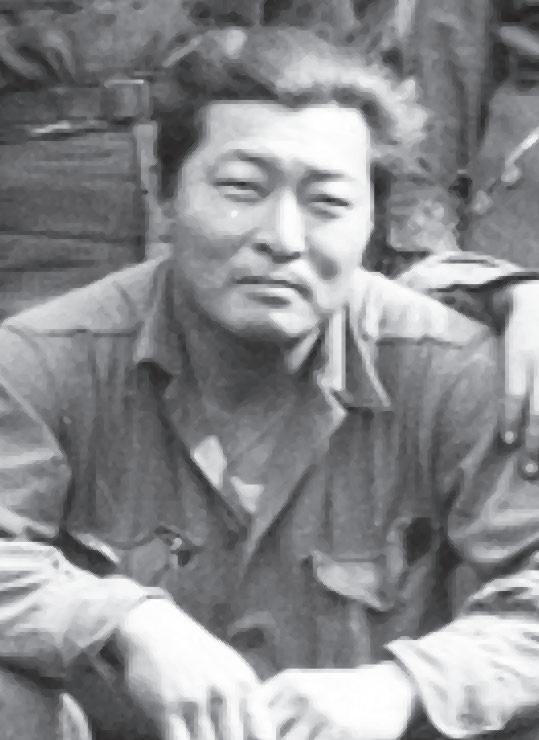



















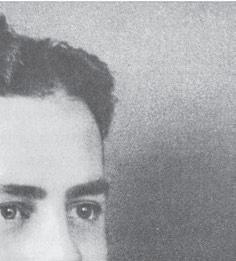



Principal Personalities xlvii
Isaac Akinaka
Hermann Balck
Alex Campbell
General Sir Harold Alexander
Peter Bull
Carla Capponi
Siegfried Bähr
Christopher Bulteel
Principal Personalities xlv
Filippo Caracciolo









xlviii Principal Personalities
General Mark Clark
William O. Darby
Hugh ‘Cocky’ Dundas
David Cole
Peter Davis
Lawrie Franklyn-Vaile
Admiral Andrew Browne Cunningham
Roswell Doughty
Feldmarschall Albert Kesselring
xlvi Principal Personalities









Principal Personalities xlix
General John Lucas
Jupp Klein
Peter Moore
Farley Mowat
Harold Macmillan
Alan Moorehead
Audie Murphy
Willhelm Mauss
Principal Personalities xlvii
Werner Mork






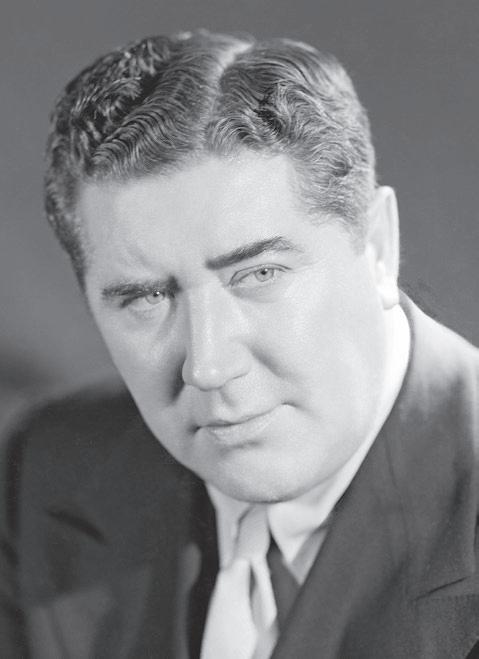


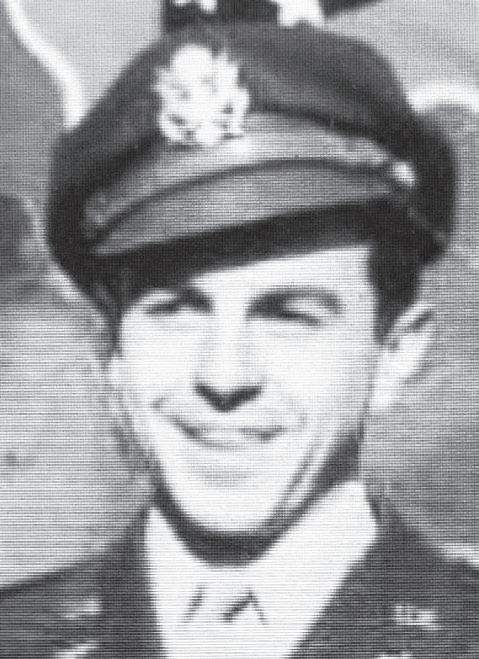
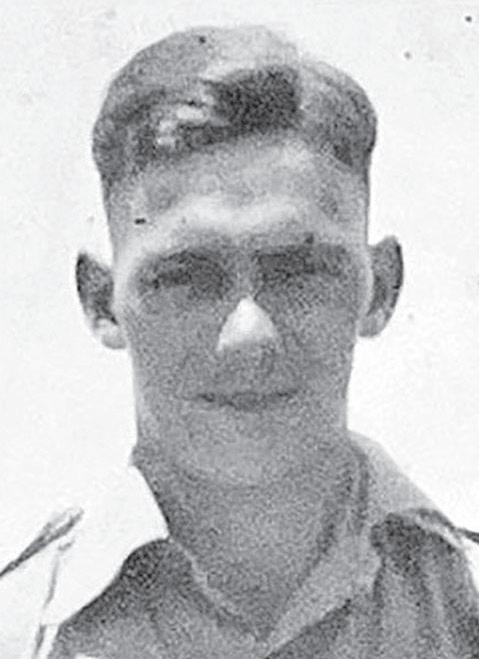
l Principal Personalities
Benedetto and Enrichetta Pagano
Quent Reynolds
Robert ‘Smoky’ Vrilakas
Wilhelm Schmalz
Harry Wilson
Martin Pöppel
xlviii Principal Personalities
General Fridolin von Senger und Etterlin
Bertie Packer
Note on the Text
Writing a campaign history such as this is a complicated undertaking, but although dealing with American, British, Canadian, German and Italian units across the armed services, I’ve tried to keep the numbers of unit names as low as possible. To help distinguish one side from another, I have used a form of vernacular – styling German units more or less as they would be written in German, and likewise with the Italian units. This really is not to be pretentious in any way, but just to help with the reading and cut down on any confusion.
For those who are not familiar with the scale and size of wartime units, the basic fighting formation on which the size of armies was judged was the division. Germans had panzer divisions, which were an all-arms formation of motorized infantry, artillery and tanks; they also had panzer grenadier divisions, which had fewer panzers – tanks – and more motorized infantry – a grenadier was simply an infantryman who was provided with motor transport to get from A to B. German infantry divisions tended to have much less motorization by 1943.
As a rule of thumb, a division was around 15,000 men, although some divisions could have as many as 20,000. Two divisions or more made up a corps, usually denoted in Roman numerals to distinguish them. Two corps or more constituted an army, and two armies or more an army group. Going back down the scales, American, German and Italian divisions were divided into regiments, while British, Canadian and New Zealand divisions were divided into brigades. Regiments and brigades were much the same, consisting of three core components, which, in the case of an infantry regiment/ brigade, were three battalions. An infantry battalion was around
850 men, divided into companies of some 120 men, which in turn broke down into three platoons and finally to the smallest formation, the ten-man squad, Gruppe, or section, depending on the nationality. I hope that this and the Glossary that follows help.
lii Note on the Text
Glossary
AF air force
AFHQ Allied Forces HQ
AMGOT Allied Military Government of the Occupied Territories
AOK Armeeoberkommando, German Army Command
Aufklärungs-Abteilung reconnaissance battalion
AWOL absent without leave
BAR Browning automatic rifle, a light machine gun
batman British officer’s soldier-servant
Bn battalion
Bren British light machine gun
C-in-C commander-in-chief
CEF Corps Expéditionnaire Français, French Expeditionary Corps
CIGS Chief of the Imperial General Staff
CLN Comitato di Liberazione Nazionale, National Liberation Committee
CO commanding officer
CP command post
CSM company sergeant-major
DUKE Dominion, UK and Empire forces
Fallschirmjäger paratroopers
FDL forward defence line
Feldmarschall field marshal (US five-star General of the Army)
(Generalfeldmarschall)
Feldwebel sergeant
Fliegerkorps air corps
FOO forward observation officer
FS field security
GAP Gruppi di Azione Patriottica, partisans operating in Rome under command of CLN Military Council
Gefreiter lance corporal
Generalleutnant lieutenant-general
Generalmajor major-general
Generaloberst general
GNR Guardia Nazionale Repubblicana, National Republican Guard, a Fascist militia force of the RSI
GOC general officer commanding Grenadier private in a grenadier unit
Hauptmann captain
Heeresgruppe army group
HG Hermann Göring
HKL Hauptkampflinie, main defence line
I & R intelligence and reconnaissance
Jabo Jagdbomber, German slang for a fighterbomber or any low-flying Allied aircraft
Jerry British slang for a German
JG Jagdgeschwader, fighter group
Kraut American slang for a German
LCF landing craft, flak
LCI landing craft, infantry
LCR landing craft, rocket
LCT landing craft, tank
Leutnant second lieutenant
LOB left out of battle
LSI landing ship, infantry
MG42 Maschinengewehr 42, German rapid-firing light machine gun
MO medical officer
liv Glossary
NASAF Northwest African Strategic Air Forces
NATAF Northwest African Tactical Air Forces
NCO non-commissioned officer
NZEF New Zealand Expeditionary Force
OB Oberbefehlshaber, commander-in-chief
Oberfeldwebel staff sergeant
Obergefreiter corporal
Oberleutnant lieutenant
Oberst colonel
Oberstarzt chief medical officer
Oberstleutnant lieutenant-colonel
OKH Oberkommando des Heeres, German Army Staff
OKW Oberkommando der Wehrmacht, German General Staff
OP observation post
Pak Panzerabwehrkanone, anti-tank gun
PBI ‘Poor Bloody Infantry’
Pfc private first class
PG Panzergrenadier, motorized armoured infantry
PIR parachute infantry regiment
POW prisoner of war
PPCLI Princess Patricia’s Canadian Light Infantry
RAF Royal Air Force
RAP regimental aid post
RCT regimental combat team
Regio Esercito Italian Royal Army
RSHA Reichssicherheitshauptamt, Reich Security Main Office, run by the SS and incorporating all police, secret police and Nazi intelligence services
RSI Repubblica Sociale Italiana, the Italian Socialist Republic, the new puppet Fascist state set up under Mussolini by the Germans
lv
Glossary
lvi Glossary
RSM
regimental sergeant-major
SIM Servizio Informazioni Militare
SRS Special Raiding Squadron, formally SAS
StuG
Sturmgeschütz, assault gun
Ted from Tedeschi, Italian for Germans
Tenente lieutenant
Tommy
German slang for DUKE forces
Unteroffizier non-commissioned officer
USAAF
United States Army Air Force
Waldlager forest camp
Wehrmacht German armed forces
XO executive officer (second-in-command)
Zambuk slang for a medic – from the Zam-Buk
‘miracle balm’
Prologue
Mid-August, 1943. A day crossing of the Straits of Messina, the slight sea breeze offering some relief from the relentless heat of the broiling sun. Leutnant Hans Golda stood on the ferry gazing back at Sicily. He was a sentimental fellow on occasion, and he couldn’t help feeling wistful about the island that had become so dear to him. The mountains rose up almost from the shore, looming magnificent and immutable against the deep-azure sky, and beyond, Etna, that still-smouldering volcano that so dominated the northeast of the island – the part over which they had been fighting these past seven weeks. And because he was prone to sentimentality but also optimism, Golda had rather filtered out the more disagreeable aspects of Sicily: the relentless burning rays of the sun, or the surly Sicilians with whom they’d associated so little. Italians who were still, on paper at any rate, allies. People who, for the most part, had struck him at earlier moments during his time there as dirty and distant. Weeks before, he’d been shocked by the squalor, by the garbage and filth left near the front door of almost every house. He had cursed the clouds of flies that swarmed around anything edible. And also the bitterness of battle. The blackened corpses. The destruction. The defeat. The knowledge that they had fought so hard and yet had been pushed back, leaving the dead and captured behind. The enemy had crushing material superiority, but Golda had put such considerations to the back of his mind, so that now, as he crossed those narrow waters, where Odysseus had skirted past
the six-headed Scylla and survived being swallowed by Charybdis, he did not feel despondent or beaten up, but rather a sense of pride at how his men had performed and something close to affection for the magnificence of the island. The Battle of Sicily was over, but, as he was well aware, the Battle of Italy was surely soon to begin.
Not quite 40,000 German troops had managed to get away from Sicily, of whom only 26,000 were from the four fighting divisions – divisions that should have had around 15,000 men each. Golda and his men were part of the badly mauled 15. PanzergrenadierDivision. How that division had been dragged through the mill over the past few years! Sent to Africa in April 1941, it had been part of the spearheading Deutsches Afrikakorps; but then it had been savaged at Alamein eighteen months later and utterly destroyed in Tunisia six months after that. From a skeleton, and then from odds and ends – men recovering from wounds, an artillery company here, a panzer battalion there, office clerks and back-room boys – Division Sizilien had been formed, to which Golda’s Werfer-Regiment 71 had been attached; they were equipped with 210mm fivebarrelled rocket launchers firing high-explosive warheads known as Nebelwerfers – literally, ‘fog throwers’. They gave a high-pitched moan as they sped through the air.
In July, Division Sizilien had grown enough to become 15. Panzergrenadier-Division – a motorized, all-arms unit of infantry, armour, artillery, engineers and reconnaissance troops, but also a reflection that the Wehrmacht had fewer tanks to spare than it once had. Golda still liked to call it ‘Sizilien’, but those days were over, and in any case most of its number had remained forever on the island. No one was under any illusion that the division now needed rebuilding yet again. It was like a phoenix, repeatedly reborn. It was also indicative of Germany’s parlous situation: it was losing the war.
None the less, they would fight on. And if 15. PanzergrenadierDivision were to emerge from the fire again, it would need a little time and space, and that meant heading north, more or less out of harm’s way. There, replacement troops would arrive, more equipment, more vehicles – if they were lucky – and then they would turn
2 Prologue
and face the enemy once more. How long did they have? That was anyone’s guess, but Golda was just glad to be alive, to still have his vehicles, at least some of his Nebelwerfers, and for the time being, at any rate, a break from the fighting.
Their orders were to head first to Palmi, a little over twenty miles away, where the remains of the regiment were due to reassemble. First, though, they needed to safely reach the other side. Earlier, as they’d waited to board, an enemy reconnaissance plane had buzzed over, but immediately more than 300 guns had opened fire either side of the Straits. Golda had watched the tracer, fingers of death reaching up into the sky, and the plane hurriedly scuttled off.
Relief. Soon enough everyone was across safely; no further Allied planes had dared to disrupt the evacuation. Slowly, carefully, Golda rolled his Volkswagen off the ferry at Villa San Giovanni in the toe of the Italian boot, mountains gazing down at them in almost a mirror of those the far side of the Straits. Golda was at the wheel, the compact car packed with boxes and with his trusted Franz sitting on top trying to keep these precious treasures together. Behind them, the Werfers of his 7. Batterie, these six-barrelled rocket mortars, towed by trucks and half-tracks. Gingerly they trundled their way along the coast road, the Tyrrhenian Sea wine-dark on their left, wheezing up switchbacks behind the coast towns of Bagnara and Sant’Elia until, crossing a valley thick with olive and citrus groves, they reached the little coastal town.
Golda’s heart ached to see what this once-charming little port had become since last he’d passed through. Dead and abandoned. Houses smashed, streets torn open by bombs. He was glad to push on through, away from the desolation, to Division Sizilien’s assembly area beyond. They rolled in, marching group after marching group threaded into a movement order marshalled by large numbers of field gendarmerie. Golda was happy to follow, no longer needing to look at a map or think about where to go. There was only one coast road, and he could always follow the vehicle in front. Where there were detours, posts had been erected to show them the right way. The sun bore down, dust swirled. Throats became
Prologue 3
parched, but they were used to that. Then night again. On they drove. Rosario was badly smashed, and an excited lone bomber dropped some fragmentation bombs as they passed through. But no one was hit; just a factory shed set on fire, the flames vividly bright against the night sky.
One day they reached Sapri, a quiet fishing town in a horseshoe bay, mountains once again rising behind. The mountains – they were never far away in Italy. The coast road wound its way through the little town, kissing the coast, and here they paused in the shade of an orange grove for a rest and a swim in the twinkling sea. Just a little way out a white hospital ship was at anchor, the red crosses shining in the sun. Small boats were ferrying out the wounded, and Golda found himself wishing for a light wound, just so that he could sail on this magnificent ship.
Precious hours. A little garden gift from God, he thought.
And then on again. At dawn they were climbing along another stretch of mountain road: steep sides to their right, a sheer drop to their left. Suddenly, a low-flying aircraft thundered over them. They were sitting ducks! One long sheaf of fire and the road would have been closed for a day, but inexplicably the pilot never opened fire; perhaps his ammunition was already out. Perhaps he felt merciful that day.
They reached the Bay of Salerno and a brief, narrow strip of coastline with the mountains pushed back a little way inland. Golda marvelled at the ruins of Paestum, for a brief moment a tourist, not a warrior, as he gazed at those ancient Greek temples, city walls and amphitheatre, thousands of years old and less touched than some of the shattered towns they’d passed through. On they rumbled, through Salerno itself, just as the bombers began circling for home. Following a hastily cleared path around bomb craters, dodging freshly collapsed buildings, through air still thick with smoke and dust. Up ahead, several vehicles had been struck. Anti-aircraft – flak – guns boomed, shells pumping the sky. Golda saw several of these deadly giants hit; one even broke up in the sky, its debris crashing down into the town below. A second bomber plunged into
4 Prologue
the mountains overlooking the port, while from a third, thick black smoke trailed across the sky in the distance. It was Thursday, 19 August 1943. Three days after Axis forces had abandoned Sicily forever.
Whatever gloom Golda and his men may have momentarily felt, he was cheered by the magnificence of Vesuvius and the glow of lava spilling from its summit, vividly blood-red against the night sky. Naples, that great city port, they bypassed and pushed on, then rumbled by Caserta with its vast, dominating palace that so dwarfed the rest of the town. On, further still, until they reached Capua, where suddenly, unexpectedly, as they crossed over the railway bridge – the road bridge had been smashed – they were drenched by a thunderstorm. Once across, they finally reached Cascano, the division’s primary destination.
A pause. And while they paused, Golda watched yet more Allied aircraft – bombers heading north. He and his men counted the machines. If only they had such air power, they thought. But then their mood lightened as three Luftwaffe fighter planes roared in to attack, cannons and machine guns blazing. Shouts of jubilation, then cheers as first one, then a second and third bomber fell. One trundled slowly earthwards, another fell like a stone, a mighty trail of smoke following in its wake.
An Italian farmer suddenly appeared accompanied by some German officers. Italians were still allies. The farmer was irate. More than a dozen of his chickens stolen! The officers wondered whether Golda’s men were guilty of this misdemeanour. Golda was incensed. No, his men had not stolen any chickens. What a suggestion! The rules were strict: no pilfering. A German soldier was allowed to barter for goods but not steal; commanders were authorized to shoot those who broke these rules. It didn’t mean such draconian measures were often enforced, but Golda, for one, was prepared to back his men. They were innocent. What an outrageous slur! Frustrated, the farmer and the officers moved on, continuing their search for the culprits.
Later, though, suspicious wafts of roasting chicken drifted across
Prologue 5
their hastily constructed encampment. Shortly after, one of his men offered him a portion of Hendl Haxen – a chicken drumstick – which he ate both with considerable pleasure and with little research into its origin.
A day at Cascano, and then they were ordered to their final destination for the time being: the village of Roccamonfina, nestling high along the edge of an ancient volcano crater. A serpentine climb up a dusty strada bianca and into a beautiful chestnut grove at the village’s edge. Below them was Sessa, with its ancient Roman amphitheatre, and an enchanting view to the dark Tyrrhenian Sea and the Bay of Gaeta beyond. Immediately all around them, a belt of stilldense woods of chestnuts, oaks, sycamores and olive groves, distant villages peeking through the verdant haze. Vehicles and Werfers parked up, tents erected. What a country! What a view! Golda was determined to enjoy himself: a brief chance to take things a little easy. Some bathing in that warm, inviting, sparkling sea just a few miles away, and a chance to unwind. Really, their new surroundings could hardly be more perfect.
A few days of calm, then, but it was not going to last long. This bitter war was not over, not by a long chalk, despite the turning of the Axis tide. The momentary lull was just a pause and nothing more. The clouds of war were rolling in again and Golda and his men would soon be caught up in the typhoon. So too would countless hundreds of thousands, millions, even.
Winter was coming.
6 Prologue














PART I Summer
The Burning Blue
Morning, Friday, 20 August 1943. At Cancello airfield, thirty miles or so north-west of Naples, the fighter pilots of 2/ Jagdgeschwader – JG – 53 were waiting at their squadron dispersal. This crew base for the pilots was not a building, not a hut, not even a tent. Rather, just an awning: a mottled brown camouflage canvas, pegged to the ground at the back and propped up by square posts and guy ropes. Under the shade of the awning were a few camp beds and some woollen rugs laid on the hard-baked clay. Ahead, thin bleached grass, and across the flat expanse of the airfield in the distance, hazy blue hills rising gently. The early morning sun was already casting a warm glow over the airfield.
Immediately in front of them were freshly dug slit trenches, the piles of dark-brown spoil offering a little extra protection. Not far away, within easy running distance, stood their Messerschmitt 109s, ‘Gustavs’ – painted in a similar mottled pattern to that of their awning, but grey rather than khaki. A few other features singled out these fighter planes: the black and white spiral spinner and the single Pik A painted on to each of the engine cowlings – for JG53 were known as the ‘Ace of Spades’.
A little distance away, a wooden trailer that looked rather like a short railroad carriage. This was 6. Staffel – or squadron – command post. Each of the three Staffeln had their own command post, own dispersal, and own areas for their personal tents. There were makeshift
CHAPTER
1
wooden tables, benches and an assortment of chairs where meals were eaten, but this was as much a campsite as it was an airfield. The 2./JG53 were camping out here at Cancello, and had been since they’d arrived from Sicily three weeks earlier. It was rough and ready, to say the least.
Much was asked of these young men – both the pilots, who were expected to get into their machines and take on a superior enemy, and the ground crews, who had to keep these fighter planes in the air with limited supplies and insufficient facilities. Flying combat aircraft was exhausting, physically and mentally. It was tougher when the surroundings were so basic, with the sun blazing down, with mosquitoes a constant menace, when you were very rarely able to get all twelve of the Staffel’s machines in the air. When senior commanders far away in Rastenburg or Berlin were constantly berating your efforts. When you were losing.
It was hot already. Not a breath of wind. The pilots only wore sand-coloured khaki shorts and short-sleeved shirts, something not encouraged in the Allied air forces no matter how hot it was on the ground: if an aircraft caught fire, clothing was an extra barrier between flame and skin. But Luftwaffe pilots were willing to take that chance. At dispersal, on this already bright August morning, most of the pilots tried to use the time for extra sleep, and so lay on the rugs on the hard ground. Some slept, others dozed. Feldwebel Eugen Kurz, on the other hand, was wide awake, perched on a camp bed, staring out at the airfield. Waiting. The Allies would be over at some point. Big four-engine bombers, twin-engine medium bombers and their escorts of P-38 Lightnings. Every day, pounding airfields and railway yards, and because there were comparatively few Luftwaffe to defend these Allied targets – and even fewer Italians of the Regia Aeronautica, the air force – more was expected of those who did still have machines, who could still fly.
And so here they were, another day, another morning, sitting, lying, sleeping at their dispersal, waiting for the call that would inevitably come.
12 Summer *
It came a little after midday. Alarm! Pilots up immediately, whether sleeping or not. Running across the baked dusty soil, brittle grass prickling at their bare legs. Ground crew starting up the engines, puffs of flame and smoke from the exhaust stubs. Parachutes and flying helmets snatched from the wing, foot into the groove on the fuselage, up on to the wing and clamber into the cockpit. That familiar smell: oil, rubber, metal and fuel. Radio leads in, oxygen leads in, signal to the ground crew, open the throttle, rumble forward, jolting across the earthen field, port rudder because of the immense torque from the Daimler-Benz engine. Speed rising. Clouds of dust. Visibility poor if you were last to get airborne. Then the shaking stopped and the shadows on the ground parted company with the machine as the Messerschmitts rose from the ground. Clear again. Their corner of Italy spread before them, the sea just a short distance on their port side. The crackle of static in the headphones and a voice announcing an enemy formation approaching Capua – a small town on the River Volturno just below them.
Both 4. and 6. Staffeln had been scrambled. The 4./JG53 were based across the airfield from 6./JG53, and among those now climbing was Feldwebel Robert Gugelberger, still one of the new boys in his Staffel – he’d joined them in Sicily on 17 July straight from training and flown his first combat mission the following day, and, fortunately for him and his comrades, had lived to tell the tale. The quality of fresh pilots had taken a huge dip since the start of the war: back in September 1939, when Germany had invaded Poland, the Luftwaffe had had four years to build up strength, gain combat experience in the Spanish Civil War and create a cadre of highly experienced pilots who would help spearhead the Blitzkrieg years of victory and territorial gains. Now, though, almost four years on, Germany was running short of just about everything, from manpower to essential resources. This had a huge effect on the Luftwaffe because there was simply not enough fuel to train pilots sufficiently. Furthermore, training had to be done over the skies of Europe, where the weather was unreliable and where large parts were threatened by enemy air activity. Demand for pilots was also rising
The Burning Blue 13
because of the terrible toll being taken: since November the previous year, the Luftwaffe had lost nearly 6,000 aircraft in the Mediterranean theatre alone. It was a staggering number. Lack of fuel, crippling losses and demand all conspired to ensure that pilots like Robert Gugelberger were reaching the front and being flung into the fray with perhaps 120 hours in their logbooks – in total – if they were lucky, and often less. This was not nearly enough. Allied fighter pilots, by contrast, were trained in North America and Africa, where the skies were wide and clear and where decent weather could be guaranteed. They were reaching squadrons with as much as 350 hours in their logbooks and were then nurtured for a week or so before being allowed to fly operationally. The mismatch in pilot skill on the opposing sides was becoming significant.
So too, in the Mediterranean, were the numbers. Those losses had been replaced in part but not in total. Most of II. Fliegerkorps was now in northern Italy, protecting the passes in and out of Italy and the Reich’s southern borders. Only a few fighter groups could be spared to defend the south.
Nor were young pilots like Gugelberger helped by the aircraft they were flying, which, in the case of the men of JG53, was the Messerschmitt 109G. It had a quick rate of climb, could dive very fast and was highly manoeuvrable but had small wings, which gave it a high wing-loading and meant it could be a cruel mistress in which to take off and land, the big engine a bit too powerful for the size of the airframe. It was not an issue in the hands of an experienced pilot, but was for those new to it with insufficient flying training. The trouble was, because there were no two-seater varieties, a young pilot’s first flight was always a considerable leap of faith in a 109.
If they made it through this first introduction, and the second and third, then chances of survival began to improve. They then had to confront their first combat mission, for which none were sufficiently prepared, but again, if they survived that and the next few, the odds began to lengthen. So a month on from joining 4./JG53, Gugelberger was an old hand, having flown combat sorties just
14 Summer
about every single day and having repeatedly found himself tussling with superior numbers of enemy aircraft. A sink-or-swim kind of scenario. So far Gugelberger had managed to swim, although he was yet to shoot down an enemy aircraft. Accurate gunnery was incredibly difficult to master, which is why the majority of aircraft shot down were targeted by a small minority of superior marksmen. Poor marksmanship, however, was also another inevitable byproduct of insufficient training and exacerbated by the vastly superior numbers of enemy aircraft every time they were airborne.
Gugelberger and his fellows climbed to some 18,000 feet until, away to their right, perhaps 1,000 metres below, he could see two formations of enemy bombers with escorts of P-38 Lightnings. Out to sea, just a short distance away, more aircraft. Then bombs were exploding below, ripples of orange flashes and smoke. Suddenly, a huge explosion rising high into the sky as a munitions dump was hit. Lightnings directly below them, and now Gugelberger peeled over and dived, the sun behind him. But his target had already spotted him and begun banking around, so that as Gugelberger approached, the American pilot was now turning towards him and opening fire, stabs of tracer fizzing across the sky. Gugelberger veered away, pulling up and turning towards the sea and clear out of the fray.
A chance to get his bearings and try to calmly spot another target. Beneath him, several more flights of Lightnings, one trailing the white smoke of coolant. It crashed on land in a ball of flame. A little way below, a wild dogfight. One plane hit the water in flames. No parachute. Five Lightnings turned back towards land, maybe 500 metres below. Gugelberger dived again, aiming to open fire on the last. Thumb on the fire buttons, the airframe juddering, machinegun bullets and cannon shells streaking across the sky. But he had fired too soon, and from an angle, and the Lightning had seen him, and once again Gugelberger found his enemy turning towards him with scarcely believable speed. Unable to break away, he continued diving, the engine screaming, his airspeed indicator flickering at more than 750 kph. Air pressure intense. He pulled the stick,
The Burning Blue 15
worried he’d never make it out of the dive, but then at last felt his machine begin to level. Ahead, three 109s on the tail of a Lightning. Feldwebel Steinmüller was scoring strikes, but with little obvious effect. Then suddenly the American pilot bailed, his parachute opening just as he hit the sea, and a little way away his Lightning plunged into the water.
Above, the sky had begun to clear and so Gugelberger turned for home, landing at 11.35 a.m. It had been another combat sortie in which he’d done very little other than survive. Outclassed and outnumbered, these Luftwaffe fighter pilots were in a constant state of reaction, rarely able to take any initiative.
And it was no wonder. At this moment in late August 1943, the Allied air forces operating in and around the Mediterranean amounted to a staggering 4,570 aircraft, which were divided into a number of different commands and forces, from the Northwest African Air Forces – which was home to the bulk, some 3,500 aircraft – to the Malta Air Command and the Middle East Air Command. All came under the overall control of Mediterranean Air Command.
Both the British and the Americans were equally wedded to the conviction that air power was key to Allied victory. Strategic air power – using air forces on their own to attack enemy targets – was at the very heart of both nations’ war planning in the 1930s and remained a vital component of Allied strategy. From Britain, RAF Bomber Command had been attacking German targets since the night of 17 May 1940 and, from early March 1943, had launched its all-out Strategic Air Campaign against Germany, initially targeting the Ruhr industrial heartland in western Germany and then largely destroying Germany’s largest city, Hamburg, at the end of July and beginning of August in what had been grimly called Operation GOMORRAH. There had also been devastating one-off raids such as that of 16/17 May 1943, when just nineteen specially adapted Lancaster bombers had destroyed two of Germany’s largest dams and badly damaged a third in a daring low-level raid. For the most
16 Summer




























































































































































































































































































































 26. Panzer-Division
26. Panzer-Division






















 Paestum
Paestum

 Volturno
Upper Volturno
R. Volturno
Monte Sammucro Venafro
Monte Corno Monte Crace
Monte Monticello
R. Volturno
Triflisco Gap
Audie Murphy’s Cave
Monte Castellano
Volturno
Upper Volturno
R. Volturno
Monte Sammucro Venafro
Monte Corno Monte Crace
Monte Monticello
R. Volturno
Triflisco Gap
Audie Murphy’s Cave
Monte Castellano

 Monte Corno
Monte Camino
Rangers
Venafro
Germans
Bare Arse Ridge
Monte Camino
Monte Corno
Monte la Difensa
Monte Sammucro
Monte Corno
Monte Camino
Rangers
Venafro
Germans
Bare Arse Ridge
Monte Camino
Monte Corno
Monte la Difensa
Monte Sammucro








































































































































































































































































































































































